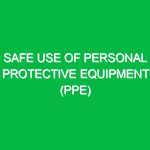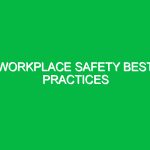Introduction
In our fast-paced world, hazardous materials are woven into the fabric of various industries, from manufacturing to healthcare. Safety procedures for hazardous materials are not merely guidelines; they are essential protocols designed to protect workers, the environment, and the community at large. These procedures encompass a range of practices aimed at minimizing risks associated with the handling, storage, and disposal of substances that can pose significant health and safety threats. Understanding these safety protocols within the Health, Safety, and Environment (HSE) domain is crucial for anyone involved in industries where hazardous materials are prevalent.
Understanding Hazardous Materials
Hazardous materials are substances that can cause harm to people, property, or the environment. They include chemicals, biological agents, and radioactive materials. Each of these categories presents different risks. For instance, chemicals might be flammable, corrosive, or toxic, while biological agents can range from bacteria to viruses that can lead to severe health risks.
Identifying Potential Hazards and Risks
To effectively implement safety procedures for hazardous materials, it’s critical to identify the potential hazards associated with them. The risks can vary based on the type of material, the quantity involved, and the environment in which they are used or stored.
Chemical Hazards
Chemical hazards are perhaps the most recognized form of hazardous materials. They can cause immediate harm through exposure or long-term health effects. For example, inhaling vapors from solvents can lead to respiratory issues, while skin contact with acids can result in burns. The risks increase significantly when these substances are improperly stored or mixed with incompatible materials.
Biological Hazards
Biological hazards include bacteria, viruses, and other pathogens. In laboratory settings, improper handling of these materials can lead to infections or outbreaks. Personal protective equipment (PPE) is essential in these scenarios, as well as strict adherence to hygiene protocols.
Radiological Hazards
Radiological materials, though less common, present unique challenges. Exposure can lead to severe health issues, including cancer. Facilities that use radiological materials must maintain stringent safety protocols, including proper shielding and monitoring of exposure levels.
Best Practices and Safety Precautions
Establishing effective safety procedures for hazardous materials involves several best practices. These practices not only protect workers but also promote a culture of safety within organizations.
Risk Assessment
A thorough risk assessment is the cornerstone of effective safety procedures. This involves identifying hazards, evaluating the risks associated with them, and implementing measures to mitigate those risks. Regular training sessions can help reinforce this knowledge among employees.
Personal Protective Equipment (PPE)
PPE is vital in protecting workers from hazards. Depending on the materials being handled, appropriate PPE may include gloves, goggles, face shields, and respirators. It’s crucial that employees are trained in the proper use of PPE and that they understand its limitations.
Proper Storage and Labeling
Safe storage practices are non-negotiable when dealing with hazardous materials. This includes using appropriate containers and ensuring that they are clearly labeled. For example, a personal experience I encountered in a laboratory setting involved a mix-up where a corrosive chemical was mistakenly stored in a non-resistant container. The result was a leak that could have been catastrophic. Clear labeling prevents such mistakes and ensures that everyone understands the risks involved.
Emergency Preparedness
Despite the best precautions, accidents can occur. Having a robust emergency response plan in place can make all the difference. This should include evacuation procedures, first-aid protocols, and access to safety data sheets (SDS) for all hazardous materials used on-site. Regular drills can help ensure that everyone knows what to do in the event of an emergency.
Regulations and Standards
The landscape of safety procedures for hazardous materials is shaped by various regulations and standards. Compliance with these is not just a legal obligation; it’s a moral imperative to protect employees and the surrounding community.
Occupational Safety and Health Administration (OSHA)
In the United States, OSHA provides regulations that govern the handling of hazardous materials. These regulations outline necessary safety precautions, training requirements, and record-keeping practices. OSHA’s Hazard Communication Standard (HCS) requires that employers inform employees about the hazards associated with the chemicals they may be exposed to, along with proper handling and emergency measures.
Environmental Protection Agency (EPA)
The EPA enforces laws that protect the environment from hazardous waste disposal. The Resource Conservation and Recovery Act (RCRA) sets standards for the management of hazardous waste, and the Clean Air Act regulates emissions of hazardous air pollutants. Organizations must ensure compliance with these regulations to avoid hefty penalties and environmental damage.
International Standards
Globally, organizations can look to the ISO 45001 standard for occupational health and safety management systems. This standard provides a framework for managing safety risks associated with hazardous materials, promoting a proactive approach to workplace safety.
Conclusion
Implementing safety procedures for hazardous materials is not just about compliance; it’s about fostering a culture of safety that prioritizes the well-being of employees and the environment. By understanding the potential hazards, employing best practices, and adhering to regulations, organizations can significantly reduce risks associated with hazardous materials. The stories of accidents and near-misses serve as stark reminders of the importance of vigilance and preparedness in safeguarding our workplaces and communities. As we move forward, let us commit to continuous improvement in safety practices, ensuring that we are always prepared to handle hazardous materials responsibly and effectively.


